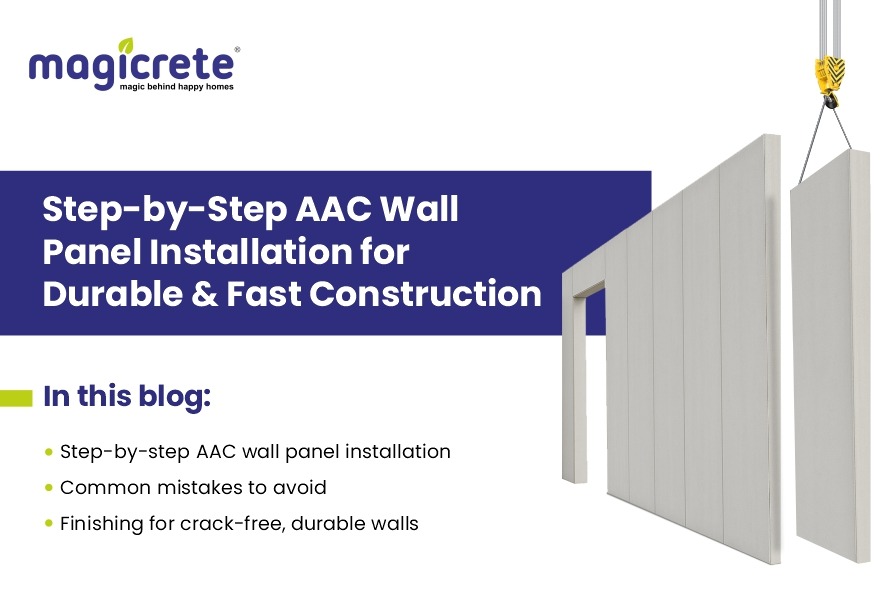The Real Shift in 2025: From Blocks to Panelization
In today’s time, traditional brickwork is no longer keeping up with the pressures of fast-paced urban development. In 2025, the real shift is toward AAC Wall Panels, engineered walling solutions designed for speed, efficiency, and sustainability.
Take the example of a leading data center project in Pune. The developer switched from 200 mm solid concrete blocks to 150 mm Lightweight Wall Panels from Magicrete. The result? 16x faster construction, reduced wall thickness without compromising performance, superior thermal insulation, and certified four-hour fire rating. Panels up to 5.4 meters high were installed across external walls, shafts, and terraces, proving their versatility in demanding projects.
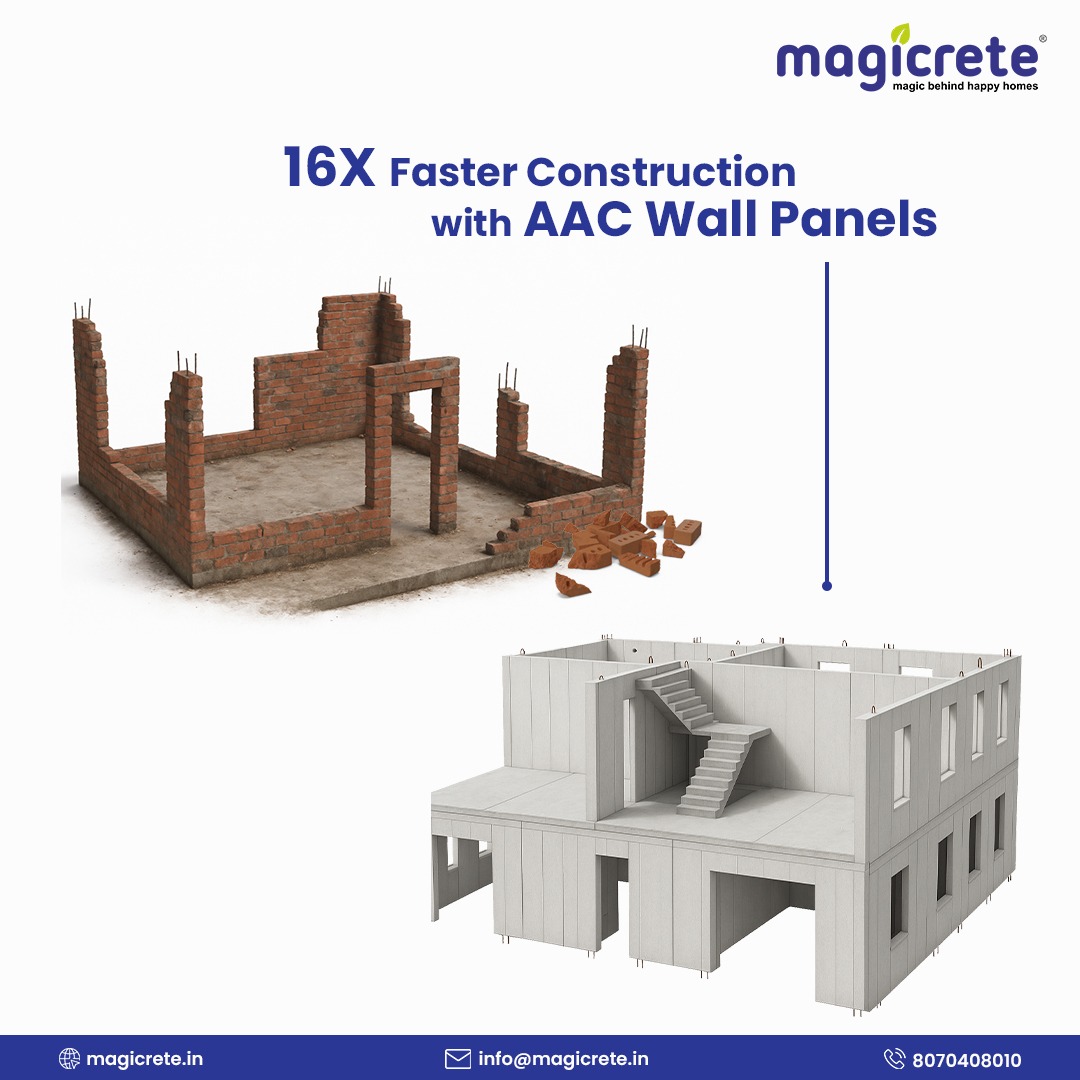
What Are AAC Wall Panels?
AAC Wall Panels are factory-made, steel-reinforced wall elements manufactured from a blend of cement, lime, silica, gypsum powder, and aluminium powder.
The aluminium induces aeration by releasing hydrogen gas, forming millions of microscopic air pores within the mix. Once set, the panels are steam-cured in high-pressure autoclaves, which enhances strength, dimensional stability, and fire resistance.
This process creates a panel that is:
- Lightweight (density: ~550–650 kg/m³) compared to RCC walls
- Reinforced with steel mesh for taller installations
- Sustainable, using less raw material and enabling faster construction
Unlike AAC blocks, which are smaller masonry units, AAC panels are large precast elements that dramatically reduce joints and installation time.
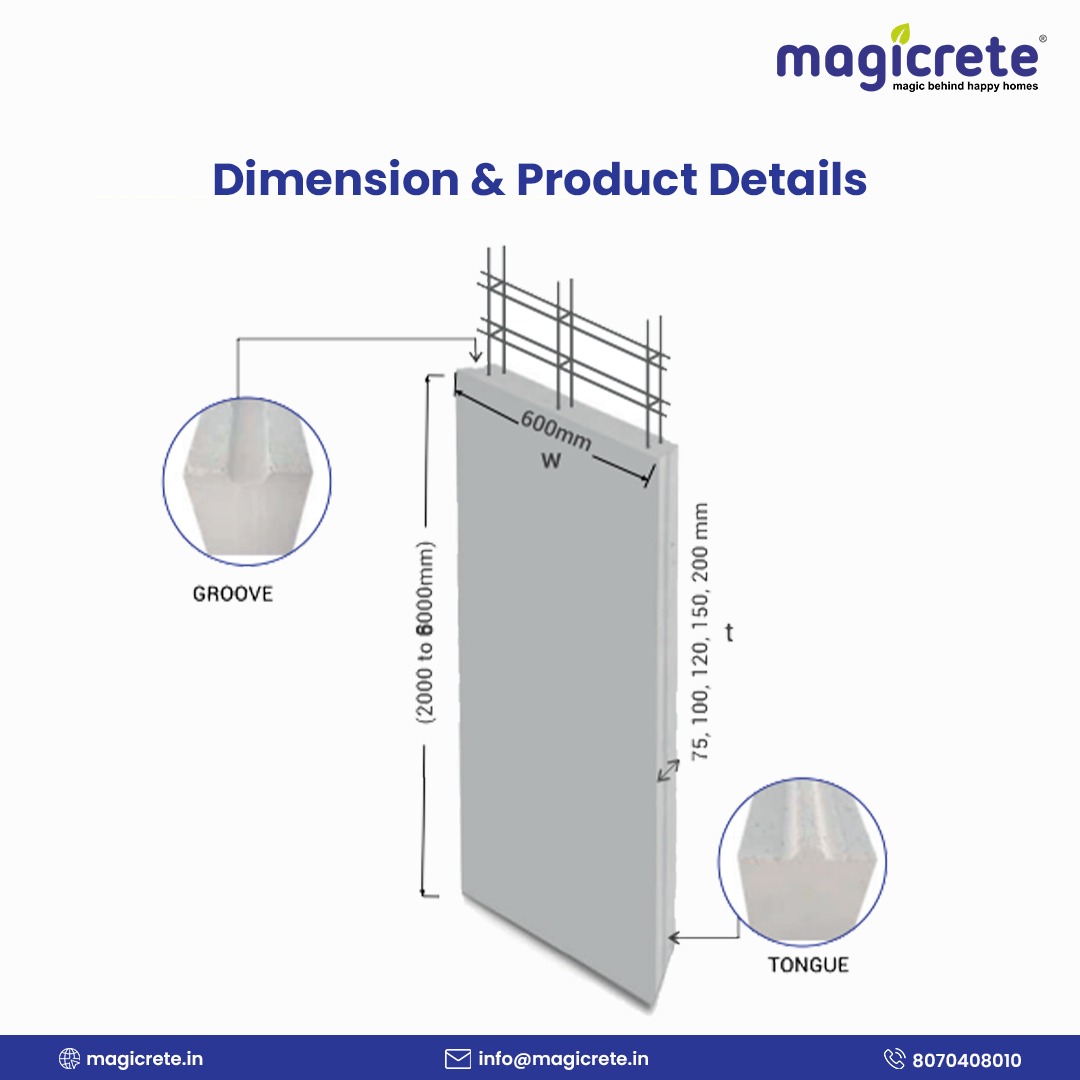
Technical Specifications and Sizes of AAC Panels
For builders, architects, and consultants evaluating the right panel for construction, here are the key technical parameters of Magicrete AAC Wall Panels:
- Thickness: 75 mm, 100 mm, 125 mm, 150, 200 mm
- Height: up to 4 meters
- Width: 600 mm
- Density: 550–650 kg/m³
- Compressive Strength: >3.5 MPa
- Thermal Conductivity: 00.16 W/mK
- Sound Insulation (STC): 43 dB
- Fire Resistance: up to 4 hours tested
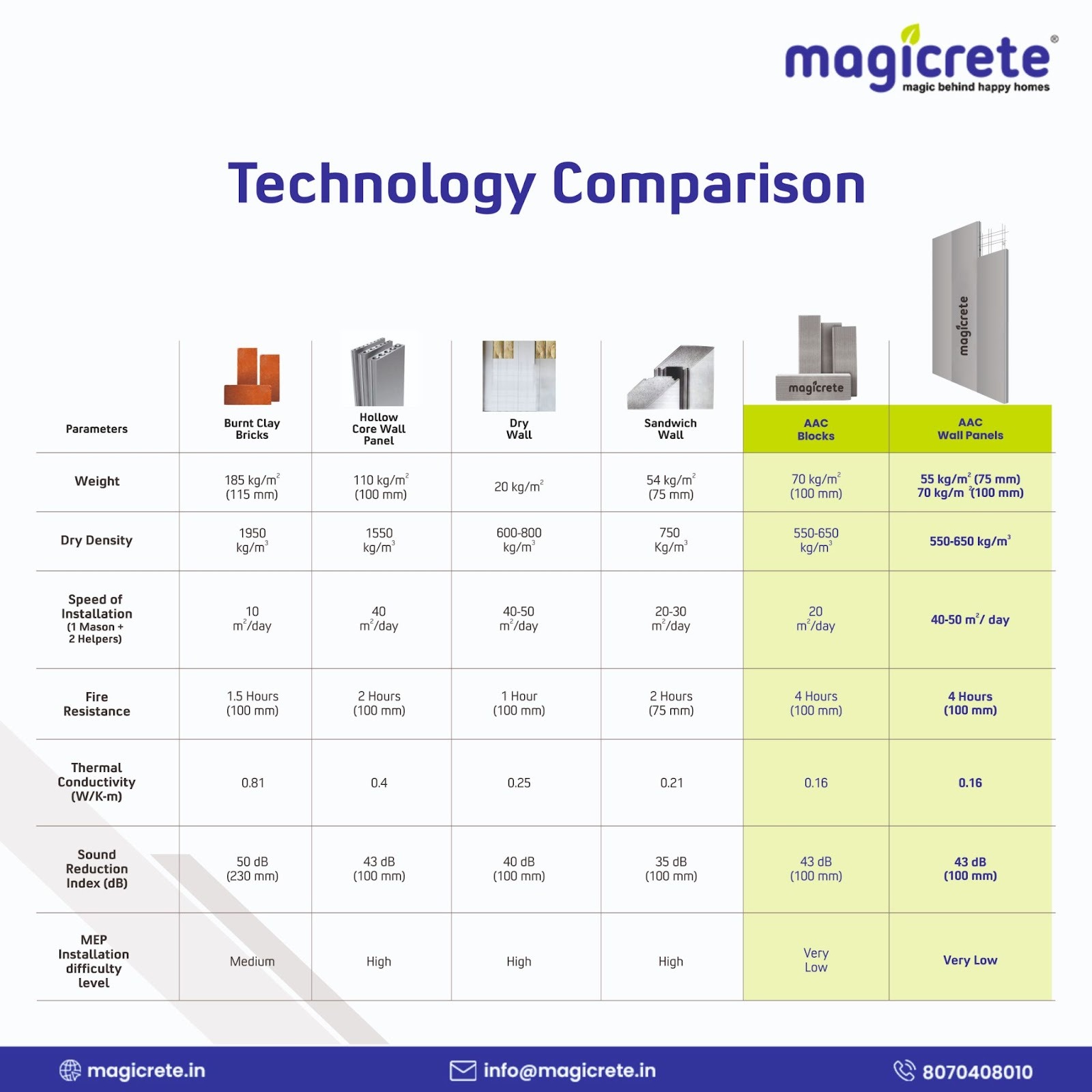
Where to Use AAC Wall Panels in Projects?
AAC panels are adaptable across multiple construction segments, making them a smart alternative to both AAC blocks and concrete wall panels. For a detailed guide check the AAC Wall Panel Application.
Common applications include:
- High-rise buildings → Internal partitions and shafts
- Precast compound walls → Durable, precast installation
- Data Centers → Internal and external walls
- Institutional projects → Schools, hospitals, and public buildings
- Residential villas & bungalows → Infill and external walls
- Hotels & prefab units → Quick partitions with consistent finish
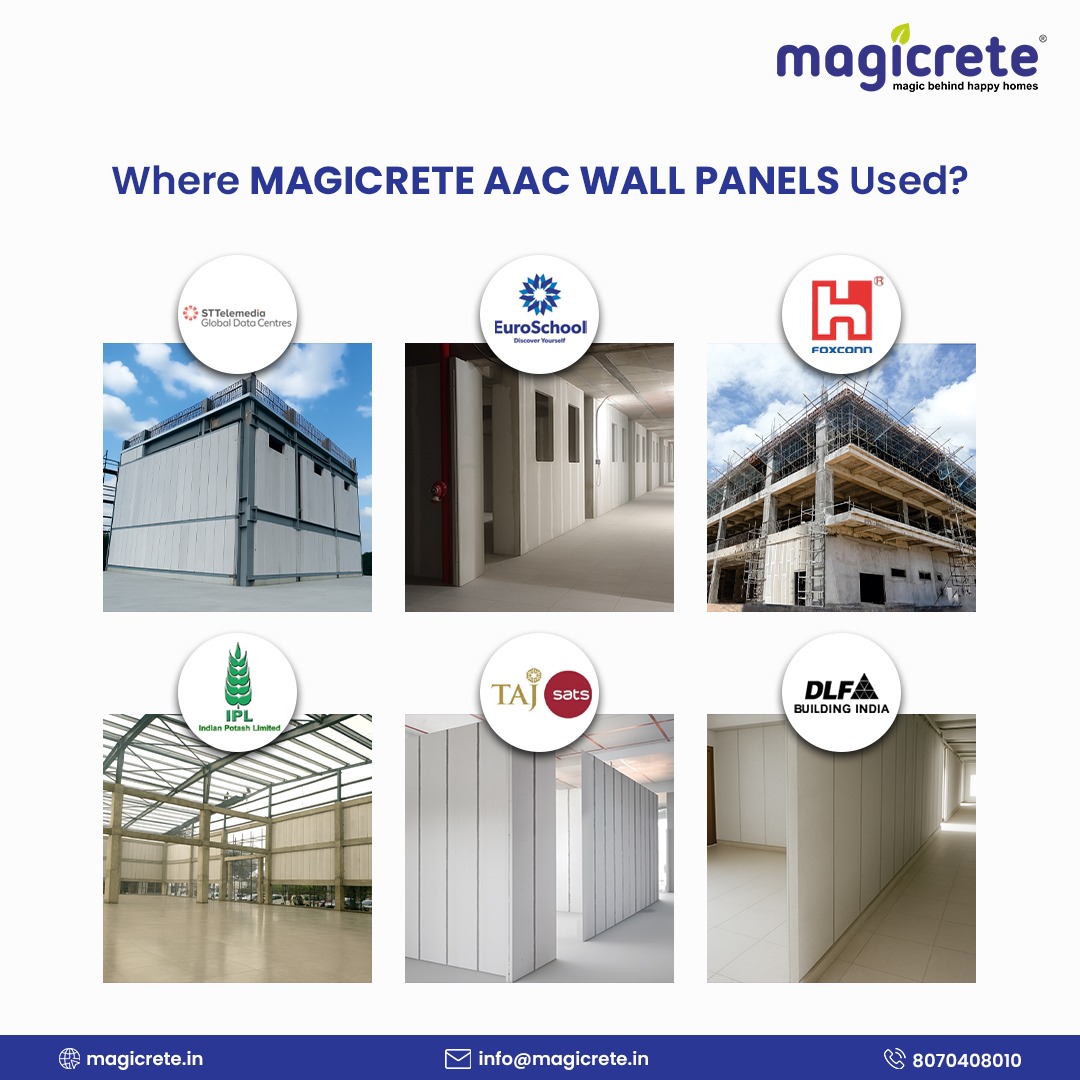
Installation Workflow of AAC Wall Panels
Installing lightweight wall panels is quicker and cleaner compared to brickwork. Here’s step-wise wall-panel installation process:
- Prepare line & surface: Ensure the floor and ceiling are free of dust. Snap a chalk line to mark the wall line.
- Provide dowels at column: Mark the column, then drill 2 holes of ~40 mm depth and 8 mm dia. Insert 8 mm × 80 mm dowel bars into the holes.
- Lay leveling bed: Apply a 1:4 sand–cement mortar strip on the floor to level the base before installing panels.
- Place first panel: Lift the wall panel and push it into position so it engages with/abuts the column.
- Wedge & align: Insert wooden wedges beneath the panel to hold level and plumb; keep the panel tight to the column.
- Anchor to floor & roof: Fix GI L-clamps at the bottom and top of the panel and secure with suitable fasteners to the slab/beam.
- Apply edge mortar: Spread thin-bed mortar (JointPRO) on the vertical edge of the installed panel (as required).
- Install next panel: Lift the next panel, press it against the previous one, align, and repeat Steps 6–7.
- Proceed across the bay: Continue installing panels until only the closure gap remains for the last panel.
- Close at the end/column: Carve two slots in the last panel for dowel connection to the end column or fix using GI slotted L-angles.
- Treat vertical joints: Apply glass-fibre tape over the panel joints and cover it with a polymer-based putty.
- Seal top gap: Fill any gap between the beam/slab and the panel with PU foam; trim/remove excess after expansion.
- Seal control joints & ends: Fill all vertical control joints and end gaps with PU sealant for an airtight, finished wall.
For a detailed guide on anchoring and finishing, we have full detailed guide on: How to install AAC wall panels correctly.
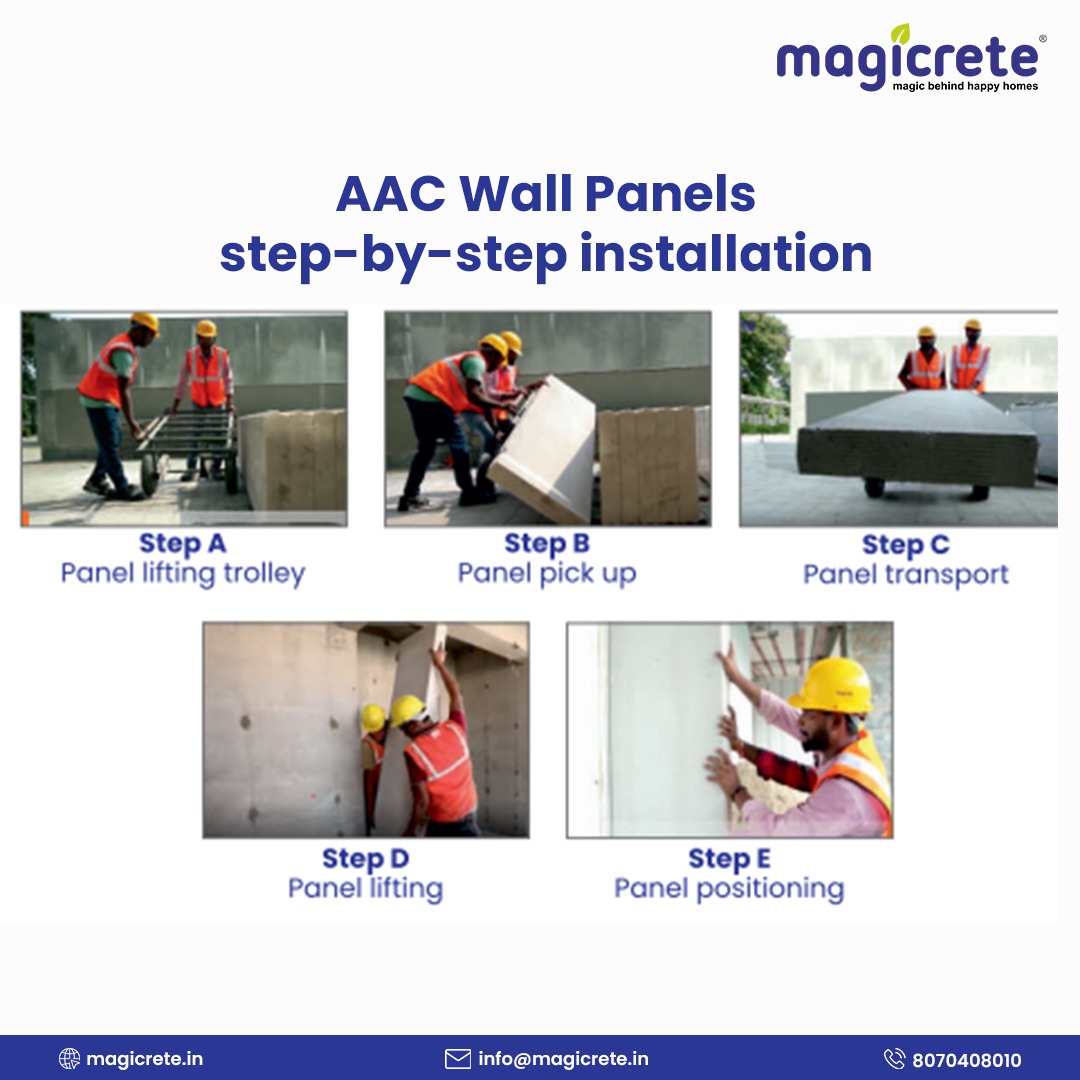
Cost & ROI Comparison with Other Walling Options
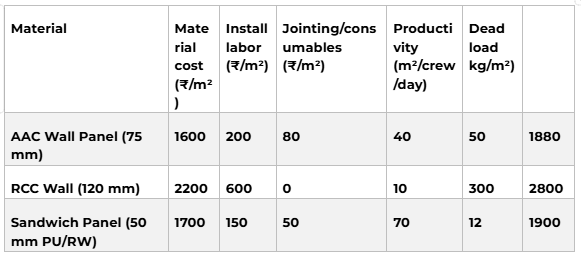
While AAC Wall Panels may involve slightly higher upfront costs, they deliver lifecycle savings in faster project delivery, reduced labor, and lighter structural load. They are especially favorable in high-rise and fast-paced developments. To see a detailed breakdown of different solutions, Check Sandwich Panel vs AAC Wall Panel.
Why Choose AAC Wall Panels from Magicrete?
- Factory automation with strict QA standards
- PAN-India supply chain with assured delivery timelines
- On-site technical support for installation training
- Custom thicknesses & faster lead times available
- BIS & GRIHA certified
Upgrade from Brick to Panels - Future-Proof Your Construction
AAC Wall Panels represent the future of smart walling in India. They address today’s construction challenges: faster timelines, reduced structural load, energy efficiency, and sustainability.
At Magicrete, we’re leading this panel wave, delivering reliable solutions across high-rise, institutional, industrial, and residential projects.
FAQ's
Q1: What are AAC wall panels made of?
They are made from a mix of cement, lime, silica, gypsum powder, and aluminum powder, reinforced with steel, and steam-cured in an autoclave.
Q2: How are AAC panels installed?
The process involves preparing the surface, providing dowels at the column, laying a leveling bed, placing the first panel, anchoring it to the floor/roof, applying edge mortar, and continuing installation. The final steps include joint taping, filling the top gap with PU foam, and sealing control joints.
Q3: Are AAC panels load-bearing?
No. They are designed as non-load-bearing infill walls, but with reinforcement, they can safely span heights up to 6 m.
Q4: What is the fire rating of AAC wall panels?
Up to 4 hours, certified under standard testing conditions.
Q5: AAC Panels vs Drywall – which is better?
Drywall is slightly faster but less durable. AAC panels provide greater fire resistance, insulation, and longevity.
Content
- The Real Shift in 2025: From Blocks to Panelization
- What Are AAC Wall Panels?
- Technical Specifications and Sizes of AAC Panels
- Where to Use AAC Wall Panels in Projects?
- Installation Workflow of AAC Wall Panels
- Cost & ROI Comparison with Other Walling Options
- Why Choose AAC Wall Panels from Magicrete?
- Upgrade from Brick to Panels - Future-Proof Your Construction
- FAQ's

